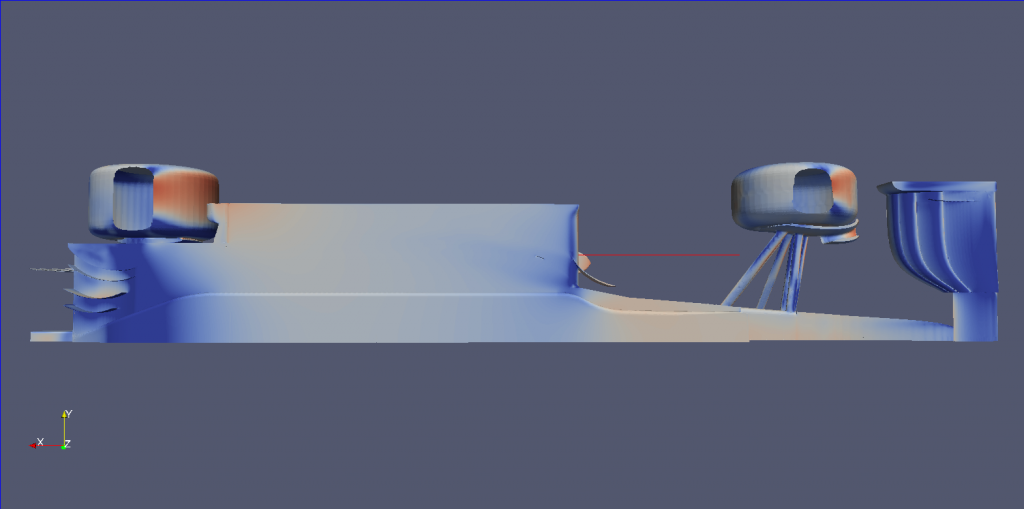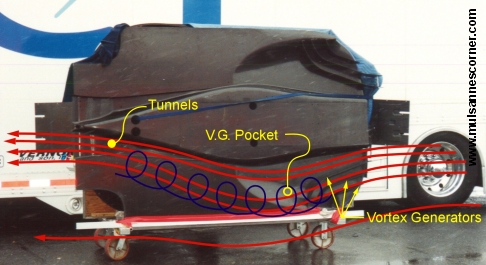- Login or Register
No account yet? Sign up
This is not correct. I experienced high pressure at the leading edge of the floor UNDER it sometimes. I would think that rake helps generating the low pressure and that some vortex generating devices are creating this situation. Again, talking about the leading edge of the floor, not the diffuser section.shelly wrote:The suction peak at the floor leading edge is caused by the leading edge itself, because it is round. The downforce is increased by the teatray and bargboard vortex system taht cause the 2 blue spikes

Maybe I am wrong, but I will dig pictures of this when I come back home this weekend. I had a design that effectively had a big rounded shape at the leading edge, and the air was getting under it and under the floor yes, but the fillet surface had high pressure under it. I will dig pictures it is easier to explain.variante wrote:No, Matt, shelly is right. The rounded leading edge of the floor generates downforce by itself. Its efficiency can be incresed by vortices, rake or by the suction of the diffuser, but it works on its own anyway.
While it's true there are vortices i think the low pressure extension (blue narrow zone protuding) comes from the design of the profile between plank and step plane which is like thisshelly wrote:From the CFD thread of this forum, some months ago:leading edge suction peak clearly visible, along with vortex low pressure strake at the front (the blue narrow zone protruding from the front).
Also noticeable double diffuser effct and diffuser kink line suction peak


I've "upped" you for your honesty =D>chuckdanny wrote:Yes, but i'm fair, i posted the proof i was wrong !
Though, i don't know if it is the vortex that create additionnal low pressure or it is painted by a low pressure area it is travelling through.



